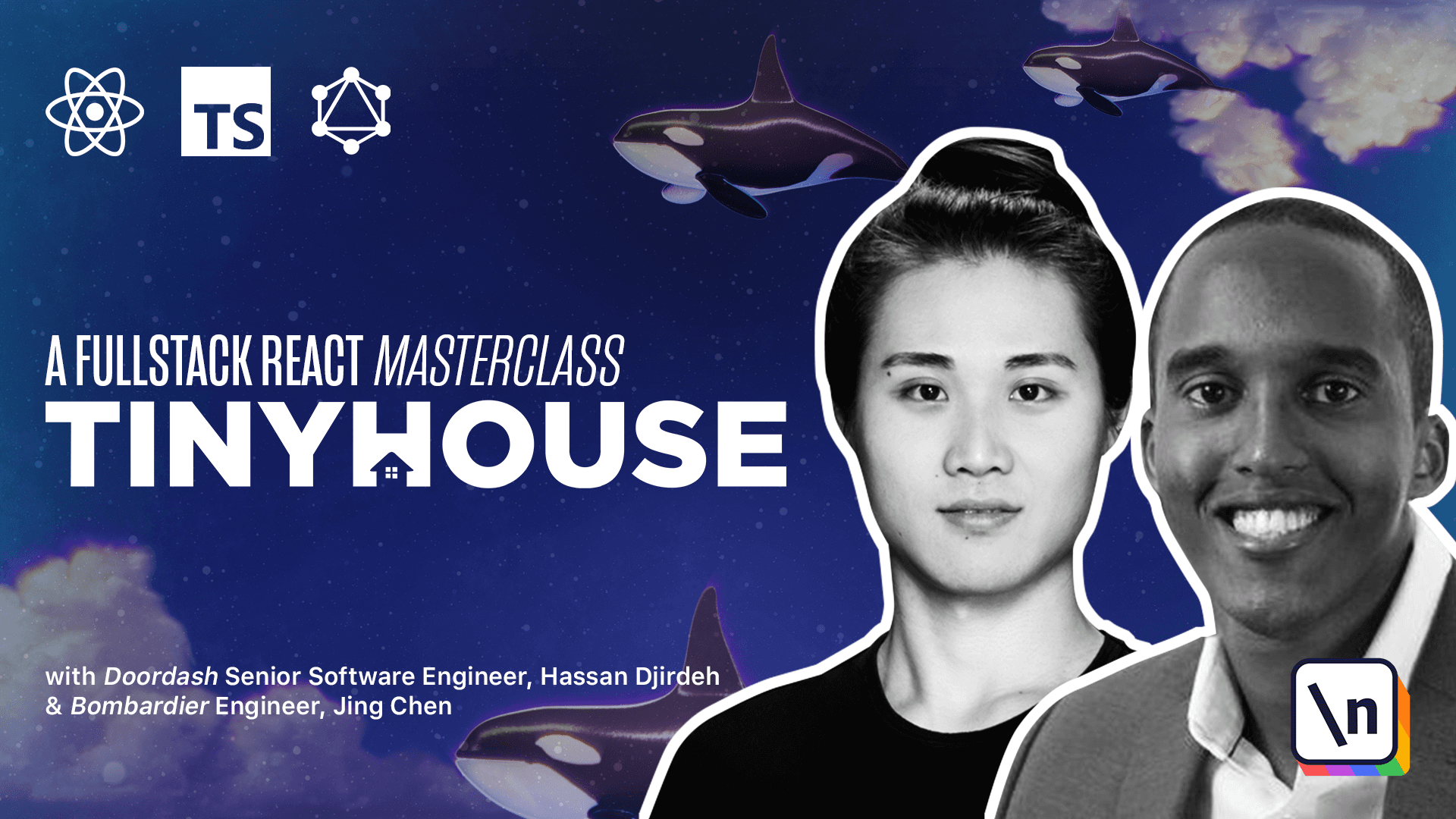Build React Apps With GraphQL, MongoDB, and TypeScript
Introduction to the TinyHouse Masterclass.
This lesson preview is part of the TinyHouse: A Fullstack React Masterclass with TypeScript and GraphQL course and can be unlocked immediately with a single-time purchase. Already have access to this course? Log in here.
Get unlimited access to TinyHouse: A Fullstack React Masterclass with TypeScript and GraphQL with a single-time purchase.

[00:00 - 00:13] Welcome to Tinyhouse, New Line's first MasterClass. In this MasterClass, we'll build a production-ready application using React, GraphQL, TypeScript, Mongo, and Note.
[00:14 - 00:22] This MasterClass is a project-based, hands-on experience, and we're incredibly excited to have you with us. We're your instructors.
[00:23 - 00:40] I'm Hassan, a front-end engineer based in Toronto, and I've helped author Full Stack View and a series of other publications under the FullStack in New Line umbrella. I've also been working with React, GraphQL, and TypeScript for a number of years now to build large-scale production applications.
[00:41 - 00:52] Hi, I'm Jing, also a developer based in Toronto. I've been working with React, Note, and MongoDB for the past few years on building apps ranging from hobbies to startups.
[00:53 - 01:02] We've broken the course down to two parts. In part one, we'll be introducing all the core technologies you'll need to develop a FullStack Web App.
[01:03 - 01:20] We'll learn about Note, TypeScript, GraphQL and Apollo, MongoDB, and React. We'll use these technologies to build a Web App that presents listing data, which is kept in a Mongo database, and it's accessed through a GraphQL API.
[01:21 - 01:33] We will also introduce a UI framework to make our app more presentable. In part two, we'll be taking everything we've learned from part one to now focus on building an actual production-ready app.
[01:34 - 01:50] We'll maintain and use all the things we've learned in part one, but now focus on building the tiny house application. We'll discuss the relationships and flow within our app, as well as handle topics like Google OAuth for signing.
[01:51 - 02:19] Use Google's GeoCode API to resolve location-based searches, stripe for handling payments, image storage with Cloudinary, deployment, and a lot more. We are excited to launch our course on the new live platform.
[02:20 - 02:34] You'll have access to all source code, screencast videos, and menu script. In order to reinforce learning material, the course also contains quizzes, project challenges, lecture slides, and a lot more.
[02:35 - 02:39] We're incredibly excited to have you, and we'll see you in the course.